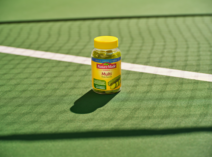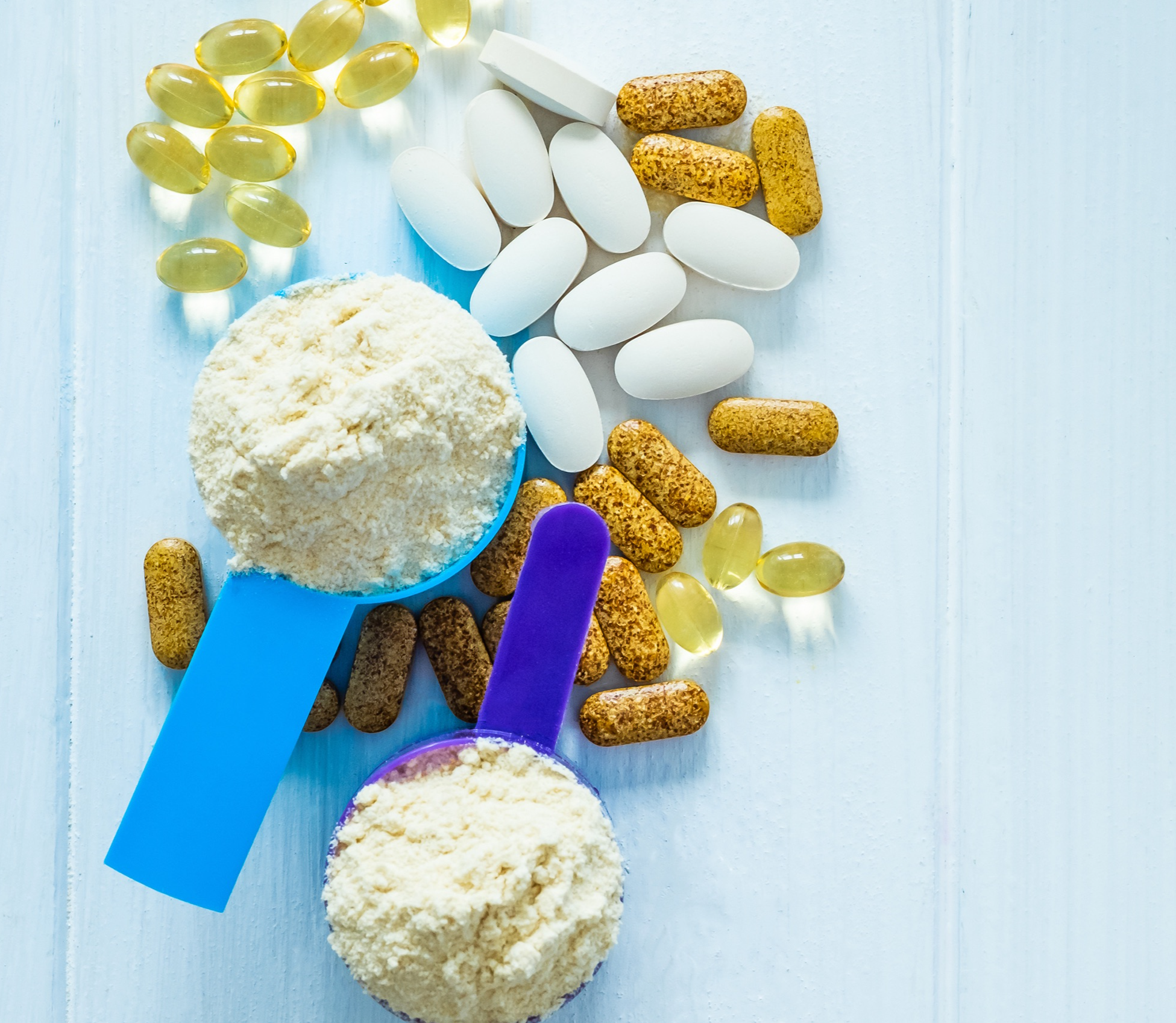Just like the rest of the body, our skin too needs adequate amounts of nutrients, not only to function properly, but to thrive as well. Unfortunately, with busy lifestyles that often include a large workload and caring for others — and thus, the accompanying stresses — we are left with little time for self-care. Few of us have time for weekly meal prep and monthly facials, and so our skin becomes a reflection of our daily choices. Are we drinking enough water? Are we sleeping a full eight hours every night? Are we getting enough sun? Are we getting too much sun? Have we eaten enough fruits and vegetables today? Are we moisturizing enough during the cold months? The answer is usually no. The result: problematic skin.
Problematic skin can range from acne to eczema and psoriasis, and it can also include conditions like melasma and hyper-pigmentation (dark spots), as well as keloid scarring and even skin tags. Premature wrinkles and age spots even fall under the category of problematic skin. Most of these conditions are a combination of genetics and environmental causes, and are often triggered by stress. Shaheen Majeed, marketing director, Sabinsa Corporation, East Windsor, NJ, agrees, “Our daily lifestyle and skin health are interlinked. Our hectic modern day schedules demand extra effort in maintaining healthy skin and managing common skin-related problems.” According to Suhail Ishaq, president, BioCell Technology, Newport Beach, CA, most skin maladies are a result of “declines in the physiological health of the skin’s dermal layer, the middle layer of the skin.”
Because most of us don’t have the time to soak up the sun, and likely don’t have a hired chef, the easier and most effective alternative to getting our nutrients is through supplements. Majeed reminds us that dietary supplements are desired to provide overall health and wellbeing, while nutricosmetics — the use of diet and oral supplements to elicit a cosmetic effect, naturally — are “designed to provide beauty benefits from within, but also provide protection from various everyday external damages (e.g. environmental exposures, sun exposure, smoking and poor diet) as well as internal factors (e.g. premature skin aging and weaker antioxidant status).”
While we know supplements cannot treat skin conditions, can nutricosmetics support those with problematic skin?
According to Golan Raz, vice president of health and nutrition, Lycored, Orange NJ, the simple answer is yes. Raz says there are multiple nutrients that can be beneficial for these types of conditions, pointing to three natural carotenoids that are being extracted from tomatoes, “Lycopene, Phytoene and Phytofluene can activate anti-inflammatory processes within the body and as a result have beneficial effects on inflammation related skin conditions.” There is a long list of botanicals that are known to be beneficial for those types of skin conditions explains Raz, “One of the most well researched natural molecules is Diosmin, which is a flavone, mainly found in citrus. Diosmin was found to be beneficial in conditions like dermatitis. Vitamin E is also known to be beneficial in some cases, and aloe vera and coconut oil are known to be helpful when applied topically.”
Rob Maru, vice president of innovation and brand development, Reserveage Nutrition, Boca Raton, FL, advises that nutritional ingredients are not designed to treat serious skin conditions but asserts that certain compounds can provide general support for maintaining and improving skin health and appearance. “Healthy fats such as fish oil, borage, chia and flax provide omega-3 and -6 oils which are critical for maintaining healthy skin,” he says, while also suggesting plant ceramides, which have been shown to “provide fast acting hydration benefits for skin by supporting the skin’s ability to maintain moisture.” He also recommends other ingredients such as zinc, vitamin D and B vitamins.
But what particular supplement corresponds to what specific condition?Acne. This particularly common skin condition is often associated with hormonal changes during the teenage years and also later in life. Acne may vary in severity from a few spots to severe cystic acne. It is most common on the face and neck but can also live on the chest and back. Acne results from a combination of hormone stimulation and overproduction of oils in the sebaceous glands of the skin, and most often affects boys more severely than girls.
According Steve Holtby, president and CEO, Soft Gel Technologies, Inc., Los Angeles, CA, acne is normally treated topically by combination of three ingredients: alpha hydroxy acid (such as glycolic acid), retionoids or vitamin A derivatives, and benzoyl peroxide. Other non-prescription products include salicylic acid, Melaleuca alternifolia (tea tree oil), Urtica dioica (as an infusion consumed two or three times a day), and Calendula officinalis (applied topically as a wash, infusion mixed with witch hazel). Holtby references a double-blind study that compared the topical use of 5% tea tree oil to 5% benzoyl peroxide and found that, although the tree oil was less potent, it had fewer side effects (1).
Eczema. This is an inflammatory reaction of the skin in which there are typically small fluid-filled blisters, followed by swelling, bumps, crusting, and scaling along with itching and burning of the skin. Two of the most common forms of eczema are: 1) atopic dermatitis — a chronic skin disease characterized by itchy, inflamed skin, 2) contact eczema — a localized reaction that includes redness, itching, and burning where the skin has come into contact with an allergen or irritant such as an acid, a cleaning agent, or a substance that the immune system recognizes as foreign, such as certain preservatives in creams and lotions.
“For many people, eczema has become a life-long struggle to control its symptoms. Although a number of treatments have been successful in managing the discomfort of eczema, no one treatment has safely or effectively worked for everyone,” says Holtby, adding, “It is important to keep the skin from drying out by the application of moisturizers and emollients. Dietary supplements can also help relief symptoms of eczema."
Holtby points to research which has shown that people with eczema tend to have a deficiency in the fatty acid gamma-linolenic acid (GLA). GLA is found in evening primrose (EPO), borage oil, and black currant seed oil. “In the body, GLA is converted to a hormone-like substance called prostaglandin E1, which has anti-inflammatory properties. Some, but not all, clinical trials have shown that EPO and borage oil are useful in the treatment of eczema,” he says.
For this, Sabinsa’s Majeed recommends an extract from the gum resin of boswellia serrata (Boswellin Super) that contains a minimum of 30% acetyl 11-keto beta boswellic acid (AKBBA). Majeed explains, this natural extract is known for having a dual inhibitory action on the inflammatory process, which is unique to boswellic acids. Boswellic acids have been shown to inhibit two pro-inflammatory enzymes, viz. 5-lipoxygenase (which generates inflammatory leukotrienes) and human leukocyte elastase (HLE) (initiates injury to the tissue, which in turn triggers the inflammatory process). Additionally, it has been clinically validated for protection against photo-aging, tactile roughness, fine lines, improved elasticity and decreased sebum secretion. Hence, it can be a useful ingredient in managing problematic skin conditions like eczema.
Psoriasis. A chronic skin condition, psoriasis is characterized by patches of dry scales that cover areas of reddish skin. These patches are most common on the scalp, knees, elbows, buttocks, genitals, and nails. Psoriasis may be, at least in part, an autoimmune disorder (where the immune system falsely recognizes portions of the body as “foreign”).
Holtby refers to purified eicosapentaenoic acid (EPA, one of the fatty acids found in fish oil) at a dosage of 3.6 grams per day, as it was found to reduce the severity of psoriasis after two to three months (2).
Sébastien Bornet, VP global sales and marketing at Horphag Research (exclusive worldwide supplier of Pycnogenol), Hoboken NJ, meanwhile, points to research that shows that natural antioxidant ingredient, Pycnogenol, French maritime pine bark extract, is effective for significantly improving the symptoms of psoriasis. One study showed that Pycnogenol reduced redness, the size of the affected area, and reduced the need for standard medications. (3)
Hyperpigmentation. More commonly known as dark or age spots, hyperpigmentation is brought on by the body’s over-production of melanin. This can be attributed to a skin injury or disease, skin procedures, sun exposure or medication.
Pycnogenol has also been extensively studied for hyperpigmentation and, according to Bornet, consistently shows promising results. A recent review in Skin Pharmacology and Physiology reveals the botanical extract was found to inhibit UVA induced upregulation of pigmentation markers by 50-75%, further supporting its ability to manage hyperpigmentation. The extract was also shown to contribute to improvement in skin barrier function which sustains skin hydration. (3)
Majeed also suggests ellagic acid, a naturally-occurring polyphenol, derived from the fruit rind of Punica granatum (pomegranate) and standardized to 90% ellagic acid. This antioxidant contains tyrosinase and hyperpigmentation inhibitory activities.
Tim Mount, CN, CCMH, director of education, NeoCell, Irvine, CA recommends using two complementary nutrients in particular — hyaluronic acid (HA) and ceramides. HA is a molecule that draws moisture into the deeper layers of the skin, while ceramides work on the outer surface of the skin to improve skin hydration. “Inflamed skin may benefit from any number of antioxidants, including alpha lipoic acid (ALA), resveratrol, turmeric, or astaxanthin, to assist the body in ‘putting out the fire.’”
Hydration Beyond WaterHyaluronic acid does far more than support hyperpigmentation, it provides overall internal hydration to the skin. In fact, at a 120mg/day dosage, clinical studies confirm a hydration benefit. HA possesses two major molecular functions: the ability to retain water and it’s instructive effects such as adhesion, migration and proliferation. Mount explains this is because HA attracts 1000 water molecules for each HA molecule. “Since HA is progressively lost as we age, our bodies dry out. Replenishing lost HA can have a quick, dramatic affect on skin softness and health,” he says. Ishaq confirms this notion calling HA a molecule that is “naturally abundant in skin and whose primary physiological role in the skin’s dermis is to maintain proper hydration of the tissue.”
According to Bornet, Pycnogenol is the only natural supplement which has been shown in clinical studies to increase hyaluronic acid synthase and collagen production in the skin. One study showed that Pycnogenol increased HA synthase in women by up to 44% after 12 weeks of daily supplementation. Pycnogenol also enhanced skin elasticity by 25% and improved skin hydration by 21% (4). Horphag research shows that the extract is a powerful antioxidant, while acting as a natural anti-inflammatory, thus selectively binding to collagen and elastin in the skin and increase regeneration of hyaluronic acid. It also aids in the production of endothelial nitric oxide, which helps with skin micro-circulation.
A pre-clinical trial using a branded hyaluronic acid (Injuv by Soft Gel Technologies, Inc.), also shows vast improvements after using HA. The trial, conducted at Otsuma Women’s University in Japan, had 96 women — 22 to 65 years-old — take Injuv (six 70 mg tablets day) for 45 days (5).
The results:
• 84% reported a great improvement in the moisture levels of their hands and face
• 83% reported a great improvement in the smoothness of their skin
• 78% reported a great improvement in the softness of their elbows, knees, and hands
• 50% reported a great improvement in the stiffness of their joints
Similarly, in a placebo-controlled study, 107 volunteers — 30 to 50 years-old, with an average age of 45 — were randomly assigned to take either two 70 mg soft gels of Injuv twice daily, or placebo, for 30 days (6). Skin’s moisture content was measured before and after supplementation. According to Holtby, participants who took the Injuv soft gel showed a “statistically significant increase in skin moisture content compared to both baseline and placebo. There were no adverse events reported.”
According to Mount, collagen is a lesser known skin hydrator, but also has clinical research to support the skin hydration benefit. In a 2014 NeoCell-conducted study on women between
30—50 years-old, it was found that collagen supplementation can hydrate skin by up to 50% in 12 weeks. This, according to Mount, is because collagen is a “matrix of proteins woven throughout skin tissue and provides an anchor for hyaluronic acid to attach to.” By rebuilding the skin’s matrix, HA was able to be held in the skin and therefore skin hydration increased.
Raz also points to ingestible hydrating options like fruits and vegetable which contain the necessary nutrients like vitamins, minerals, polyphenols, and carotenoids, saying the secret is in the water content. “Cucumbers and lettuce will have a very high water content,” he explains, while also pointing to vegetables that contain silica, like celery, as an important source of hydration.
The Glue That Holds Everything In the Body TogetherWhat is it about collagen that has so many consumers relying on this nutrient? Perhaps it is the very notion that it is the most abundant protein in our body, and therefore an important component in skin elasticity, firmness and overall structure. Ishaq refers to collagen as one of the building blocks of the skin and says the very idea that individuals can ingest this simple ingredient and help the body to more effectively maintain the respective tissue is a simple one for most consumers to understand. Ishaq explains, the dermal layer is the largest contiguous area of connective tissue in our bodies and connective tissue physiology is dependent upon the maintenance of the network of collagen fibrils and glycosaminaoglycan abundant ‘ground’ tissues in our skin.
Maru notes that collagen has the ability to plump from within the epidermis (the skin’s outermost layer), providing a thick, protective cushion. It also helps retain moisture, making it an additionally important factor in hydration as well. The decline of collagen is typically an issue most of us don’t have to worry about until after our 20’s, when our body no longer produces it in abundance. Thus, younger skin appears full, radiant and wrinkle free. “As skin starts to lose integrity, the telltale signs of aging — fine lines, thinner skin, and dullness — begin to emerge,” Maru says.
Because collagen is a matrix of fibers that are woven throughout the skin and hold it tight to a person’s face, Mount explains, gravity takes over as the collagen breaks down and matrix sags, making the skin appear loose and aged. “Rebuilding the collagen matrix internally can help tighten skin to facial structures and reverse the signs of aging,” he says.
According to Majeed, reports have suggested that centella extract — obtained from the dried leaves of Centella asiatica, commonly known as Mandookaparni or Gotu Kola, which is widely known in Indian systems of medicine — can help improve the synthesis of collagen and other tissue proteins by modulating the action of fibroblasts as well as stimulating collagen remodeling. It has also been known to increase maturation and cross linking of collagens, support epithelial tissue formation and wound healing. Hence, Centellin could particularly be helpful in maintaining healthy skin tone and elasticity along with improved healing of damaged and injured skin. Majeed also suggests soy isoflavones, a standardized natural extract containing soy isoflavone aglycones, genistein and daidzein. According to Majeed, isoflavones are “phytoestrogens” or plant-derived estrogens, structurally similar to the female hormone estradiol. Genistein is a potent antioxidant and inhibitor of tyrosine kinase as well. Soy isoflavones are clinically proven to be effective in delaying the aging process by improving epithelial thickness and collagen fibers, as well as in increasing the population of blood vessels and improved skin elasticity.
Holtby adds that vitamin C is also essential in the regulation of collagen structure, which is necessary for the extracellular stability of the skin. He also suggests the trace mineral, silica, which has been shown to “contribute to certain enzyme activities that are necessary for normal collagen formation. Silica is essential for maintaining the health of connective tissues due to its interaction with the formation of glycosaminoglycans (GAGs), which are structural building blocks of these types of tissue.“ Holtby also points to sulfur as another necessity for collagen synthesis, as it gives the skin its structure and strength.
The Turmeric EffectTurmeric, scientifically called Curcuma longa and native to southern Asia, is one of the most revered ancient spices, particularly for its anti-inflammatory, antibacterial and antioxidant capabilities. Many look to turmeric to aid in discoloration of the skin, particularly age spots, melasma and dark under-eye circles, by incorporating the powder into a homemade facial mask.
Peaking in popularity over the last few years, tumeric — which is the main spice in curry — has garnered both positive media coverage and research findings according to Raz, while some in the field will even incorporate the nutrient as part of a well-planned therapeutic strategy. Mount confirms, “Turmeric has a large body of research and a long history of use, especially in Eastern dietary and medicinal systems,” and because it is safe, affordable, and effective, it is all the more appealing to consumers. As an antioxidant, Maru explains, “turmeric helps to fight off free radicals and helps to protect against the ageing effects of wrinkles, dry skin, and dark spots. For those with sensitive skin conditions its anti-inflammatory properties may soothe flare-ups. Plus, it contains curcumin, which works to fight the bacteria that can cause acne.” Apart from supporting healthy skin and problematic skin, turmeric’s anti-inflammatory and antioxidant properties are also used to heal wounds.
Majeed references several studies which have confirmed curcuminoids, the active chemical compounds found in turmeric, as the main contributor for its effectiveness against varied skin conditions like dermatosis, acne and dyspigmentation. Tumeric also possesses anti-glycation properties, which also expedites the healing process and overall skin vitality. Majeed points to Sabinsa’s propriety curcumin product (Curcumin C3 Reduct), which is standardized for minimum 95% tetrahydrocurcuminoids and includes tetrahydrocurcuminoids, tetrahydrodemethoxycurcumin and tetrahydrobisdemethoxycurcumin. “The cascading antioxidant ability of tetrahydrocurcuminoids is well established and so is their safety, from published clinical studies.” she says. Majeed also points out that the ingredient has been known to provide protection against UV radiation as well.
Mount says that as a clinical nutritionist, the root cause of problematic skin is never easy to determine. “For some it’s a food allergy or toxin, while others have difficulty converting vitamins into activated form or deficiencies in their diet.” For this reason he suggests taking a broad spectrum nutricosmetic. By incorporating HA, collagen and turmeric into a daily skincare regimen, you and your consumers will be one step closer to getting radiant, problem-free skin from within.WF
References
1. Bassett IB, et al. “A Comparative Study of Tea Tree Oil Versus Benzoylperoxide in the Treatment of Acne,”Med J Aust. 1990; 153:455
2. Kojima T et al. “Long-Term Administration of Highly Purified Eicosapentaenoic Acid Provides Improvement of Psoriasis,”Dermatologica1991; 182:225
3. “Study Finds Natural Extract Pycnogenol to Improve Psoriasis Symptoms Including Redness, Skin Hardening and Flaking,”http://www.pycnogenol.com/actualites/study-finds-natural-extract-pycnogenolR-to-improve-psoriasis-symptoms-including-redness-skin-hardening-and-flaking/?L=1%2C, accessed January 10, 2017
4. “Pycnogenol Shown to Improve Visible Signs of Aging,”http://www.pycnogenol.com/actualites/pycnogenolR-shown-to-improve-visable-signs-of-aging/?L=1%2C, accessed January 10, 2017
5. S. Omori, “Clinical Trial on Injuv,” Otsuma Women’s University, Japan. Unpublished study performed 6/1/00-7/15/00
6. University of Maryland, “Eczema,” http://umm.edu/health/medical/altmed/condition/eczema, accessed January 10, 2017
Published in WholeFoods Magazine February 2017

Nature Made Makes Waves With Pickle-Flavored Gummies
April 15, 2024









